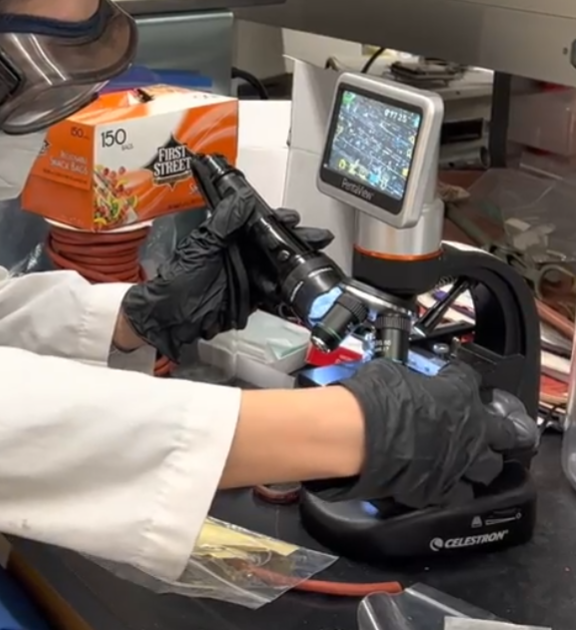In 2022, a group of students at Santa Monica College formed a team for a NASA-funded competition for undergraduates, “NASA MINDS,” They called their team Astromonica, and they fabricated some superhydrophobic coatings for use on lunar EVA suits. To simulate static-clingy lunar regolith, they shined one of our ultraviolet lamps onto artificial regolith overnight, and they used our Vernier Labquest2 and Vernier charge sensor to measure the ionization of that dirt. To simulate an airless environment, they used our vacuum pump and our vacuum pressure gauge. To view the results of their work, they used our digital microscope. The idea was that a superhydrophobic surface has microscopic or nanoscopic gooves that air can fit into, but that water cannot fit into; the water is repelled because there is air taking up those spaces on the surface. There is no air on the moon, but as soon as an astronaut re-enters an airlock after working on the lunar surface, the airlock fills with air and presumably tthis air will also rush along and into the grooves in the superhydrophobic surfaces. Such rushing air would push off clinging dust, by getting underneath that dust, instead of just blowing on top of the dust. Astromonica was a finalist in the nationwide competition, and won 2nd place in the technical paper category.


Comments are closed